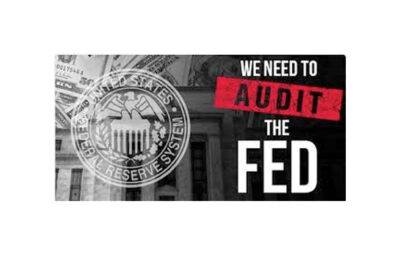Is It Time To End the Federal Reserve?
Since it began operations 98 years ago, the Federal Reserve System has performed functions that are vital to the financial system. Yet the fact that the Fed now plays some important roles doesn’t show that the Fed is the only institution capable of playing those roles, much less the best at doing them. In fact, history shows us that private institutions have been more capable at carrying out many of the Fed’s activities. As the Fed begins a new and indefinitely large round of quantitative easing, it’s time to consider whether the Fed, compared to its alternatives, has been doing more harm than good.
One of the Fed’s main roles is to clear and settle payments that occur between banks. The Fed totals up the net obligations that banks incur to one another, and settles them by transferring balances from one bank’s account at the Fed to the other’s. Historically, private clearinghouse associations cleared and settled all interbank payments. Today, they still handle about half, and credit card payments are entirely cleared through private systems. Private clearinghouse associations are owned by the member banks that they serve. The Fed’s operations could be privatized by turning them over to the member banks that nominally own shares of the regional Federal Reserve Banks.
The Fed also regulates commercial banks. The regional Federal Reserve Banks examine commercial banks’ balance sheets to ensure they have sufficient reserves and capital to meet their day to day obligations. In the past, regional clearinghouse associations fulfilled these roles. Member banks had to disclose their financial statements to the clearinghouse so that it could determine which of its members were sound and which were not. Banks that had problems had to shape up or risk being kicked out. We moved away from this system when the Federal Reserve Act effectively nationalized the regional clearinghouses. The power to set banking standards and to supervise compliance is now concentrated in Washington D.C. Given the failures of regulators leading up to and during the financial crisis, it is hardly clear that the Fed is up to the task.
One benefit of private clearinghouses is that historically they would lend to member banks that merely needed cash, but would not lend to member banks that were insolvent. The other members would never agree to bailouts at their expense. Contrast this with the Federal Reserve System that today bails out irresponsible banks when they get into trouble and can pass the expense on to taxpayers.
An additional role of the Fed is that it issues and distributes currency notes to banks so that they can keep ATMs and teller’s tills ready for their customers who want cash. Up until the 1930s, private commercial banks in the United States were also allowed to issue currency. Private currency may sound outdated, but when we consider travelers checks, ordinary checks, money orders, and credit and debit cards, privately issued forms of money (and close substitutes for money) are perfectly normal. When you walk into a Macy’s to buy a sweater, you have confidence that Macy’s will accept your payment in the form of an “IOU” (created by a credit card swipe) backed by a private firm like Visa or Mastercard. Why not again allow banks to issue paper currency?
Finally, the Fed conducts monetary policy, which traditionally has been framed in terms of establishing the level of the “fed funds” rate, the interest rate at which banks borrow from one another. In recent years the Fed has pursued “quantitative easing,” framed in terms of the volume and type of assets that the Fed will purchase. Both rest on the Fed’s power to determine the total quantity of money that exists in the U.S. economy.
This power over the quantity of money is the one function that would not be performed by any one institution under a private monetary system. But that is a good thing! Without a disruptive central bank committee trying to guess what the right amount of money should be, banks would respond to changes in the public’s desire to hold money by issuing more or fewer banknotes. The quantity of money would be far less prone to accelerating too fast, creating unsustainable booms like the U.S. housing bubble, or too slow, forcing dramatic cutbacks in output like we saw in the 1930s.
When a freer banking system is combined with a sound monetary standard, the kinds of booms and busts that are caused by the Fed’s arbitrary swings in monetary policy will be reduced dramatically. Putting money and banking on a sounder and more freely competitive footing will put more certainty into the economy’s outlook, something the country is desperately lacking today.
By Lawrence H White, James Broughel









